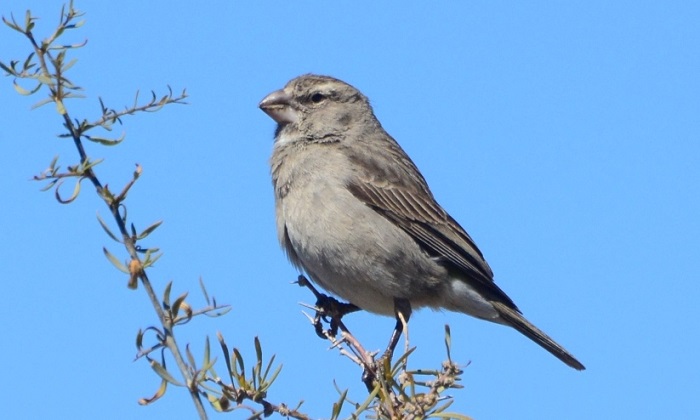Cover image of White-throated Canary by Ryan Tippett – Carnarvon district, Northern Cape – BirdPix No. 60667
Identification
The White-throated Canary is a large, robust, greyish-brown canary with a heavy bill. The Sexes are similar, but females have slightly duller plumage. The most distinctive features are the yellow-green rump, white throat and heavy bill.

Matjiesrivier Nature Reserve, Western Cape
Photo by Andrew Hodgson
The head is greyish brown with olive-brown streaks, especially on the crown. It has a distinct white supercilium and a white throat and chin. The upper parts are greyish-brown with dusky streaks. The rump is bright yellow-green and is conspicuous in flight. The breast is pale grey shading to pinkish-buff on the belly. The under-tail is white. The heavy, conical bill is horn-coloured and the lower mandible is lighter in colour than the upper mandible.
Juveniles are similar to the adults but have a duller olive-yellow rump.
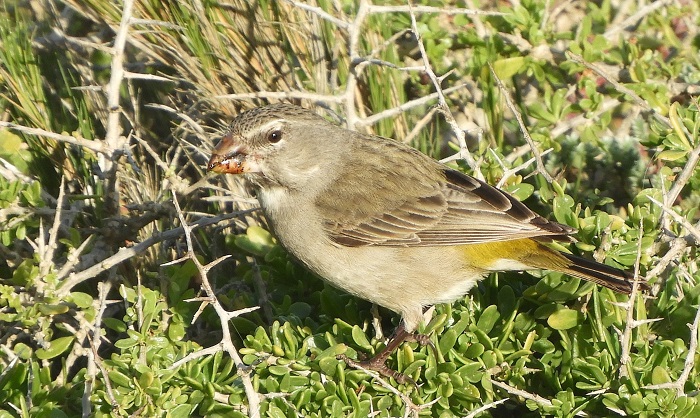
Stilbaai, Western Cape
Photo by Gerald Gaigher
The White-throated Canary is most likely to be mistaken for the Protea Canary (Crithagra leucoptera). The Protea Canary has a distinctive black chin, a pale pinkish-grey bill and indistinct white wing bars. It lacks the conspicuous supercilium and yellow-green rump of the White-throated Canary.
The Streaky-headed Seedeater (Crithagra gularis) is also similar but is smaller, with a more slender bill and a more prominent white supercilium. The Streaky-headed Seedeater also lacks the yellow-green rump of the White-throated Canary.
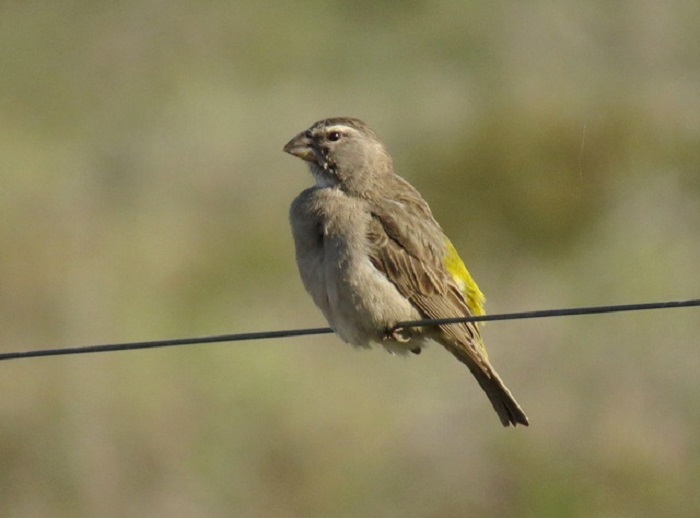
Steytlerville district, Eastern Cape
Photo by Pamela Kleiman
Status and Distribution
The White-throated Canary is a common resident and local nomad. It is near-endemic to southern Africa, extending marginally into Angola where it occurs on the coastal plain as far north as Benguela. it is mainly found in Namibia and the Northern, Western and Eastern Cape provinces. There are also scattered records from the western and central Free State, North West Province and Lesotho.

Details for map interpretation can be found here.
There is no evidence of major changes to the range of the White-throated Canary, although it has been suggested that habitat has been lost to alien vegetation in the southern parts of the Western Cape. This species is not threatened.

Malgas district, Western Cape
Photo by Johan and Estelle van Rooyen
Habitat
The White-throated Canary inhabits semi-arid and arid shrublands, rocky hillsides with tall shrubs, sparse woodland along seasonal drainage lines, coastal strandveld and gardens in Karoo villages and farms. It also occurs locally in Renosterveld in the Fynbos biome. It needs to drink water regularly which may account for its absence from Bushmanland and parts of Namibia.
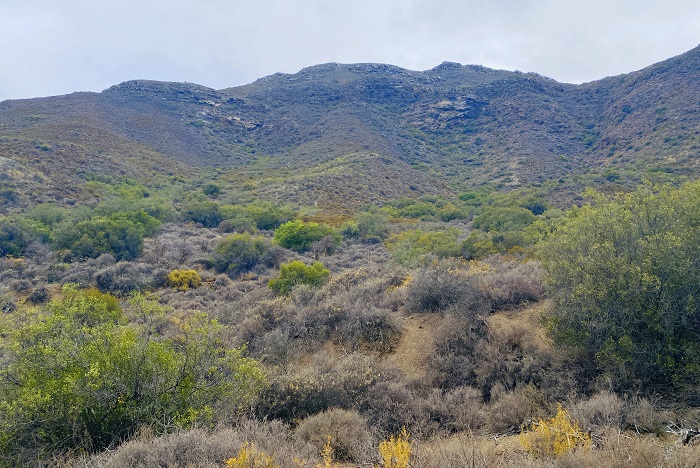
Near Montagu, Western Cape
Photo by Karis Daniel
Behaviour
The White-throated Canary is normally found in pairs or small family groups of up to 8 birds, but is regularly seen in flocks of up to 30 at drinking sites. Drinks regularly, often flying considerable distances during the heat of day to do so. They are usually fairly quiet, except for their distinctive call-note on take-off.
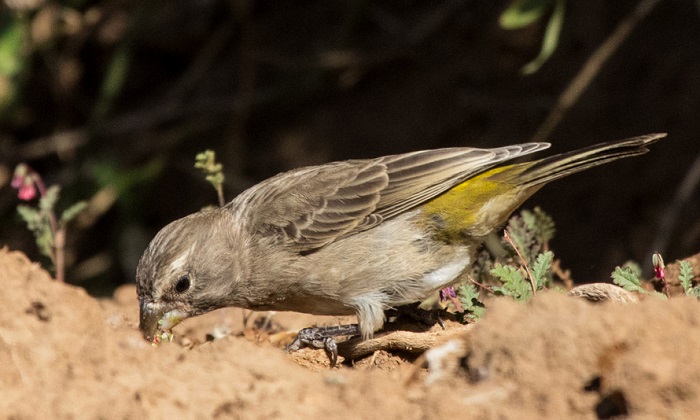
Near Schoombee, Eastern Cape
Photo by Derek Solomon
The White-throated Canary Forages on the ground and the tops of shrubs and small trees. They feed on a wide range of seeds and small fruits from grasses, forbs, and shrubs and trees. They also consume flowers and buds, as well as various small insects like termites, grasshoppers and fly larvae. They can crack hard seed capsules with the robust bill to access the seeds within. They first remove the seed capsule from the plant before manipulating it on the ground.

Addo Elephant National Park, Eastern Cape
Photo by Gregg Darling
The White-throated Canary breeds mainly from August to December in the winter rainfall south-west, but may breed at any time of the year after rain in drier regions. At the onset of the breeding season the males sing from a prominent perch, usually on a small bush or tree.
The nest is a cup of dry plant stems, lined with plant down and bound with fine strips of grass. It is placed from 1 to 3m above the ground in the fork of a bush or small tree. The nest is constructed entirely by the female.

Calvinia district, Northern Cape
Photo by Tino Herselman
2 to 5 eggs are laid per clutch and the incubation period lasts from 14 to 18 days. The female performs all the incubation and the male supplies her with food while she is on the nest. The newly hatched young are fed by both parents on regurgitated seeds and insects. The nestling period lasts a further 15 to 17 days.

Albert Falls Nature Reserve, KwaZulu-Natal
Photo by Roelof van der Breggen
Further Resources
Species text adapted from the first Southern African Bird Atlas Project (SABAP1), 1997.
The use of photographs by Andrew Hodgson, Derek Solomon, Gerald Gaigher, Gerald Wingate, Gregg Darling, Johan nd Estelle van Rooyen, Karis Daniel, Pamela Kleiman, Roelof van der Breggen and Tino Herselman is acknowledged.
Virtual Museum (BirdPix > Search VM > By Scientific or Common Name).
Other common names: Witkeelkanarie (Afrikaans); Weißkehlgirlitz (German); Serin à gorge blanche (French); Witkeelkanarie (Dutch); Canário-de-garganta-branca (Portuguese).
Recommended citation format: Tippett RM 2024. White-throated Canary Crithagra albogularis. Biodiversity and Development Institute. Available online at https://thebdi.org/2024/03/28/white-throated-canary-crithagra-albogularis/
List of bird species in this format is available here.
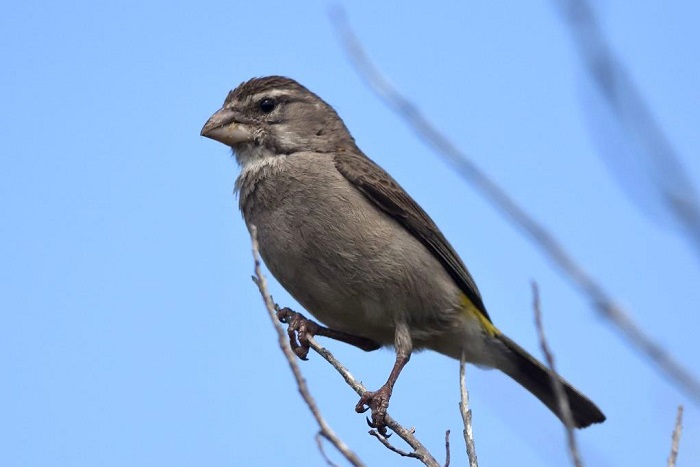
Tygerberg Nature Reserve, Western Cape
Photo by Gerald Wingate

